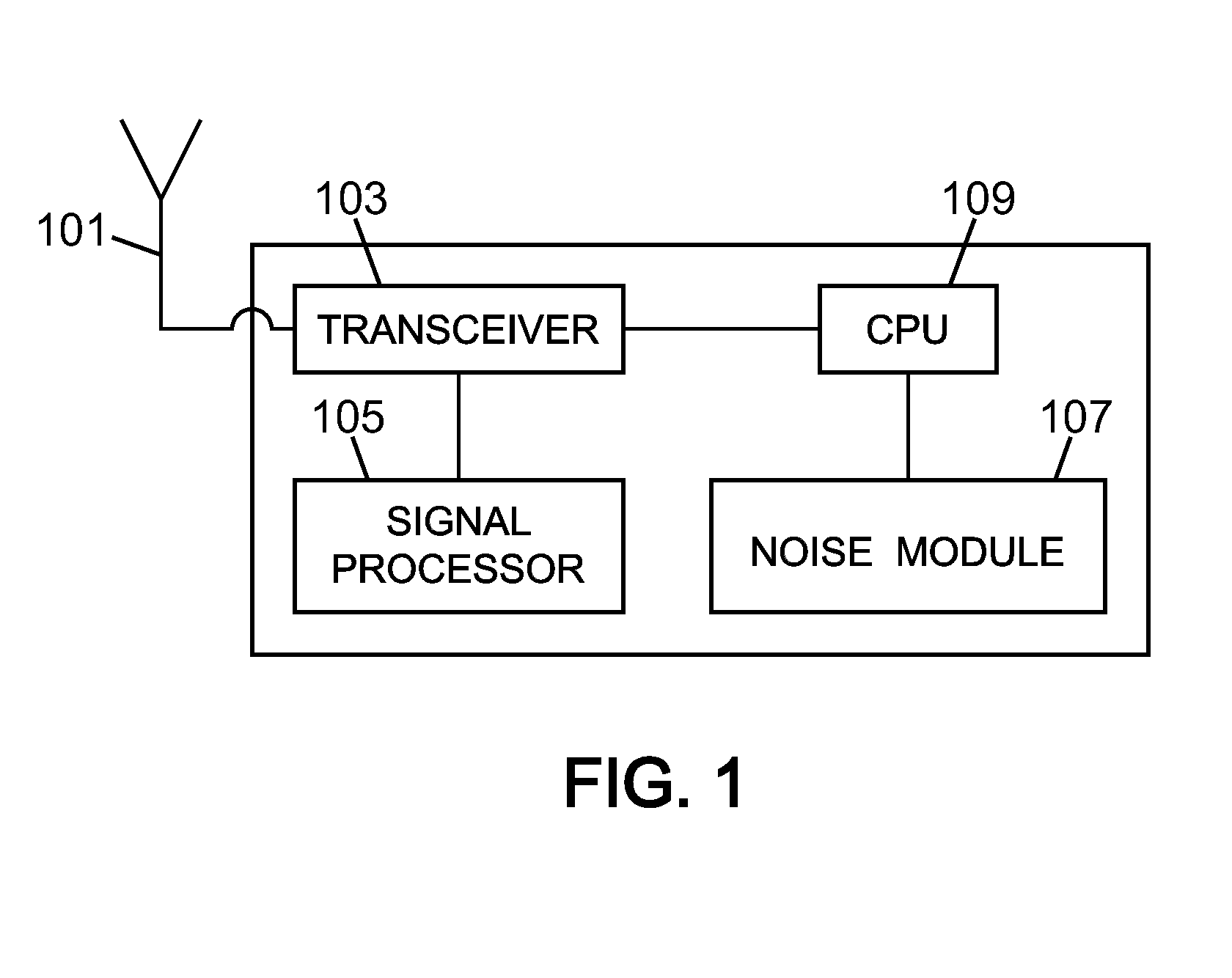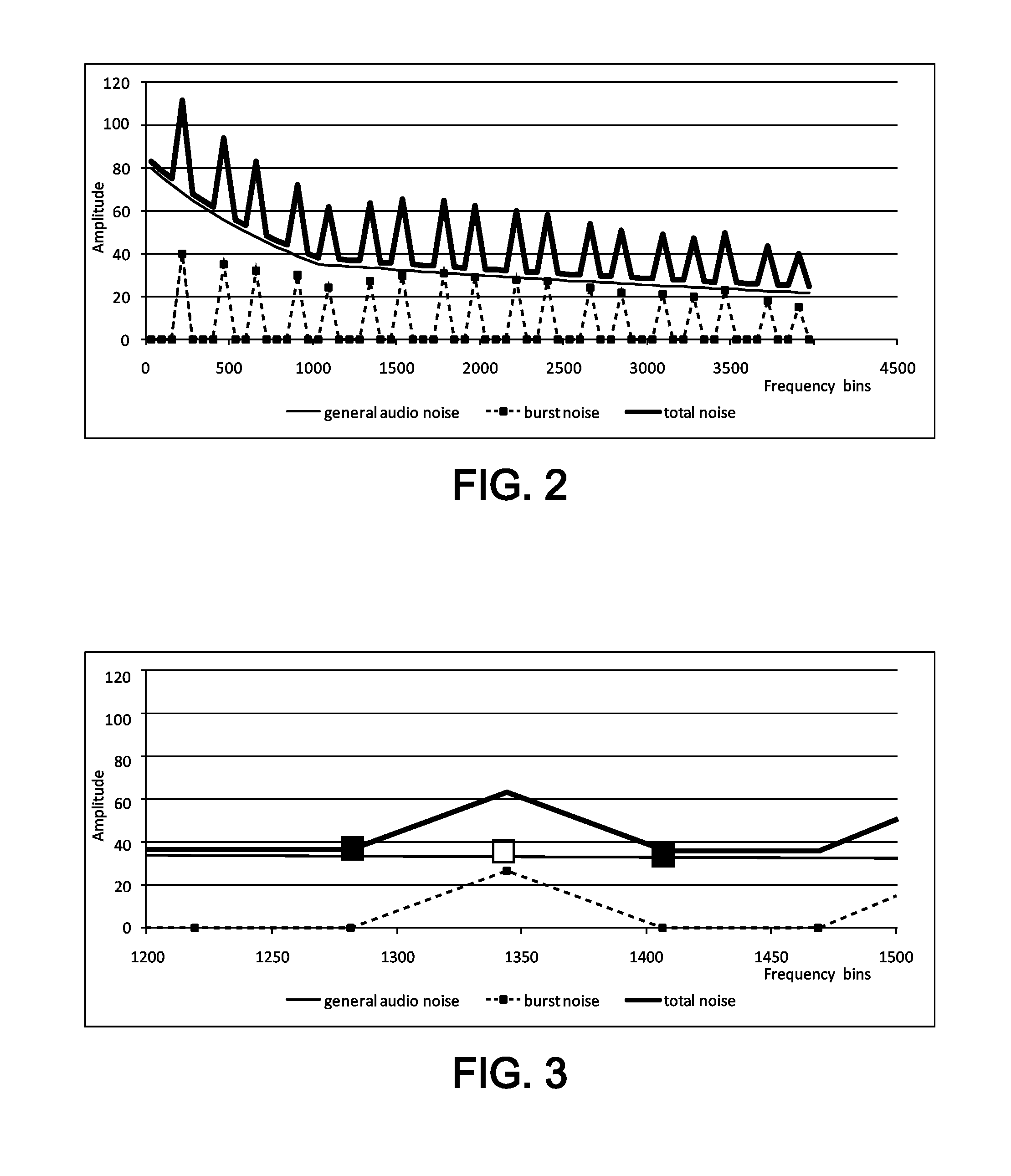Noise Suppression
a technology of noise suppression and noise reduction, applied in the field of noise suppression, can solve the problems of audio noise problem appearing as “burst noise, burst noise can be really annoying, burst noise exists in the audio channel, etc., and achieve the effect of preserving voice quality, continuous burst noise suppression, and reducing nois
- Summary
- Abstract
- Description
- Claims
- Application Information
AI Technical Summary
Benefits of technology
Problems solved by technology
Method used
Image
Examples
first embodiment
[0032]In the first embodiment, the idea is based on the noise suppressor of which operation was briefly explained earlier. In fact, the proposed noise suppression method is by essence adaptive and would then track the variation of burst noise level or spectrum linked to variation of phone local environment.
[0033]The idea consists in forwarding to the noise module 107, in this case called noise suppressor, some information regarding the radio transmission in terms of radio activity (informing about continuous / discontinuous transmission) and in terms of radio transmission power. This information is then treated by the noise suppressor 107 to predict a correction for the estimated noise. Because in the present invention the estimated noise will track the variation of radio transmission, the noise suppression will be continuous on the burst noise itself.
[0034]The GSM / GPRS / EDGE phone protocol stack, in particular the layer 1 protocol layer, knows well what the radio transmission activity...
second embodiment
[0058]the present invention is described next with reference to the flow chart of FIG. 5. The idea is based on an adaptive filter, i.e. the noise module 107, trained to match a coupling transfer function between radio activities and an audio path. The key is to feed this filter with a synthesised or probed signal representing in time the radio activity. The output of the filter is subtracted from the audio path.
[0059]Considering that RF is the radio output level in time, F is the radio to audio coupling transfer function, we can write B as the radio coupled audio noise: B=F(RF). The audio path itself contains this noise but also the useful audio signal called S, so the audio path signal A is A=S+B=S+F(RF) which represents a useful signal with radio coupled audio noise.
[0060]In step 501 the filter receives information regarding new radio conditions. In step 502 a synthesised signal RF′ is obtained which follows as close as possible the radio output level in time. Considering G being ...
PUM
 Login to View More
Login to View More Abstract
Description
Claims
Application Information
 Login to View More
Login to View More - R&D
- Intellectual Property
- Life Sciences
- Materials
- Tech Scout
- Unparalleled Data Quality
- Higher Quality Content
- 60% Fewer Hallucinations
Browse by: Latest US Patents, China's latest patents, Technical Efficacy Thesaurus, Application Domain, Technology Topic, Popular Technical Reports.
© 2025 PatSnap. All rights reserved.Legal|Privacy policy|Modern Slavery Act Transparency Statement|Sitemap|About US| Contact US: help@patsnap.com



